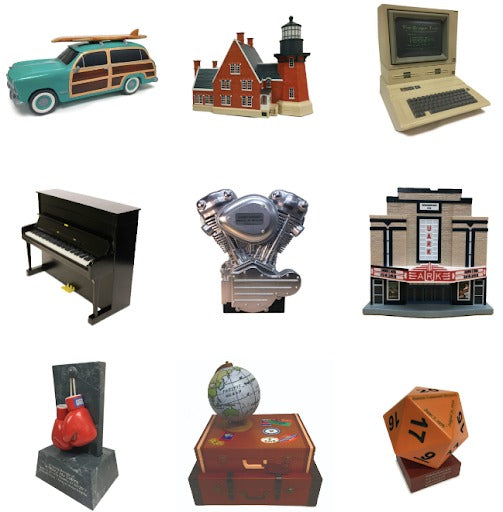Though end-of-life planning can be difficult to face, doing so will ensure that your wishes are respected and your loved ones are prepared. There are several key factors to include in your end-of-life planning checklist, including preparing documents, listing assets, selecting housing, deciding on funeral arrangements, choosing an urn, and writing an obituary. Doing all this before your passing will relieve the burden on your loved ones during a time of immense grief.
Creating a Checklist
Creating a list of tasks to complete for end-of-life planning will allow you to stay organized and make sure you don’t forget anything. Below are some of the most important steps you should take. Completing this checklist will help you feel more at ease about your end-of-life planning.
Prepare Your Documents
It’s important to make sure your documents are in order as you begin your end-of-life plan, also known as an estate plan. Estate planning covers the transfer of property, personal matters, and possibly tax planning at death. The core document in an estate plan is your will. Other documents could include a living trust, living will, power of attorney, organ/tissue donation, and a domestic partnership agreement. Be sure to store these documents in a safe and accessible place, with digital and physical copies, so that your loved ones can easily locate them when the time comes.
List Your Assets
Assets are, in a nutshell, what you own and will pass down to your loved ones. During end-of-life planning, create a comprehensive list of your assets, including bank accounts, investments, properties, and personal belongings such as jewelry or art to better understand what you own. Your list will vary depending on what you’ve accumulated throughout your life. These are some things that are considered assets:
- Real estate/Land
- Pensions/Retirement plans
- Cash/CDs/Treasury bills
- Investments, stocks, bonds
- Life insurance policies
- Collectibles
- Corporate assets
Select Housing
You may reach the point where you need end-of-life housing, so be sure to make decisions about it beforehand. As part of your end-of-life planning checklist, the first thing to consider when deciding is what type of housing you anticipate needing. The three primary options are an assisted living facility, a nursing home, or in-home care.
Assisted living facilities give people personalized care in a residential setting. Often, they are small communities much like an apartment building would have. These facilities are for seniors whose well-being requires a higher level of support. Assisted living allows for a healthy lifestyle and social engagement. Touring a facility can help you make a decision for your end-of-life planning since you can get a feel for the staff and culture in the community.
Nursing homes are a type of residential care that provides 24/7 care to seniors or those with detrimental health conditions. Unlike assisted living facilities, nursing homes are equipped to provide high levels of medical care. While you’re doing your end-of-life planning, you should consider touring nursing homes to find one that’s a good fit.
In-home care relies heavily on who your caregiver is. It could be a family member, friend, or professional. Finding the right fit in this scenario is paramount. In-home care can help someone who needs assistance to live independently, is managing a chronic illness, or requires close care during all hours of the day. Professional caregivers can provide short- or long-term care in the home, depending on your needs.
Decide on Funeral Arrangements
During end-of-life planning, making plans for your funeral or burial arrangements is one of the kindest things you can do for your loved ones, however morbid it may seem. You can ease the burden during a time when they are grieving. There are several types of funerals, including a traditional service, viewing or visitation, wake, memorial service, celebration of life, committal service, and scattering of ashes. Consider your religious beliefs and final wishes, then decide on how you want your loved ones to say goodbye.
Choose an Urn

Upon cremation, you may choose for some or all of your ashes to be stored in an urn. This allows your loved ones to feel a continued connection to you. There are many options when choosing urns, with variations in shape, size, and material. Be sure to choose an urn that reflects your personality, character, and legacy.
Custom urns are an ideal way to uniquely encapsulate a life. Foreverence individually designs personalized urns to do just that. Our team works closely with you to understand your vision, including what was most important to you throughout your life and how you want to express it after you pass. Our focus is on honoring your life. Foreverence urns are hand-crafted, hand-finished, and completely unique. Creating your custom urn is the one true element in a series of decisions made during end-of-life planning that is truly uncompromised.
Foreverence also offers a selection of semi-custom, predesigned curated urns. These urns are unique by way of design and materials, allowing you to capture the character and essence of your life.
Write an Obituary
Obituaries don’t have to be written after one’s passing. Many people decide to write their own obituary or death notice, giving them full control over how the word will be sent out. Others choose to have a conversation with a trusted loved one about what they would like to be included when the time comes.
End-of-Life Planning
Putting together an end-of-life planning checklist will help you feel more prepared and ensure that you take care of everything. Though it may seem overwhelming, it’s an act of love and consideration for yourself and your loved ones. By preparing documents, listing assets, selecting housing, deciding on funeral arrangements, choosing an urn, and writing an obituary, you’re providing a roadmap that eases the burden on your family during a challenging time. This end-of-life planning checklist is not just a list of tasks—it’s a way to ensure that your legacy is honored, your wishes are respected, and your transition is as peaceful as possible.
To start designing your custom urn, contact the Foreverence team.










